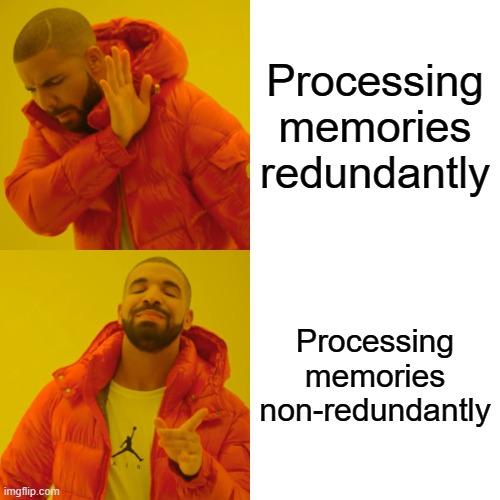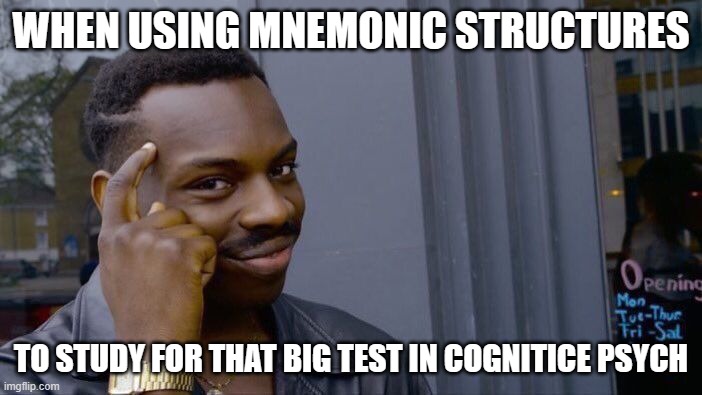By Sarah Kimbro

What goes into remembering memories?
For memories, learning how to process and organize them is great for when we want to do well at work, at school, or even with relationships. When it comes to processing your memories, it starts with your working memory, and depending on how you memorize and use your working memory affects what then becomes stored. To completely utilize the working memory, you have to use it to its full capacity, which also includes using the best method to encode the things in working memory so that they are able to be processed into your long-term memory store. One of the best methods to use is chunking, where you ‘chunk’ the things that are similar that you want to remember together. There are about four chunks that can go into working memory before you start to forget things (1) and so then comes the encoding to process those memories from working memory into your long-term memory.
It’s all connected…
Memories tend to be connected to one another, like they are filed away based on different criteria. Chunking is just one of many kinds of mnemonic devices that are used to better help encode things into memory, and mnemonic devices are just memorization tools (2). These tools are what connect the memories to one another. In the brain, the formation of these mnemonic structures involves a lot of different pieces in the brain that all operate in separate places, one of those places being the hippocampus (3). Depending on the memory and the sensory input that is involved in the memory is what dictates what pieces in the brain are used to help encode those memories (4). The hippocampus is the most evident place for much of where long-term memories are kept in the brain, the hippocampus being in the temporal lobe, more central in the brain. This place in the brain is related to pattern recognition, association, and it’s the spot that lights up when one’s brain is being scanned, as they are thinking of their memories (3).
How do I remember what I want to remember?
As previously mentioned, chunking is one of the best mnemonic devices, but many different people utilize many different tools to help them remember memories better. Other examples of mnemonics are acronyms, association, and songs or rhymes (2). If you are studying for a biology test, creating a song, an acronym, or a rhyme that connects topics that are related can help to better remember terms and facts. Another aspect to the processing of memories is the familiarity and the interest that you have in the topic. It is easier to learn new information about a topic if you are already familiar with it, due to being able to understand how the new information fits in with the information you already knew (5). For example, with the current event of the protests going on in many college campuses about the war in Palestine, after you become familiar with the base storyline of why the students are protesting and what they hope to accomplish, the more facts that you learn after that comes is encoded and filed away with more ease.
Efficient memory strategies.
The best way to make the most of the information that you are storing and filing away is to create a non-redundant processing of filing the information, that is, be able to recognize the information that is needed versus not needed when remembering this information. In a study done by Eidels, Townsend, and Pomerantz (2008), they found that when presenting four items and asking the participant to choose the item that did not belong, the participant would have significantly better results when the items had a context, story, or theme that was given to them prior to the display of the items, versus when there was no information given to them prior to the display (6). So if the theme of the items was kitchen utensils, the four items displayed were a pan, a pair of tongs, a knife, and a garbage can, the participants would have been able to know that the garbage can was the item that did not belong in the group, quicker than if they did not know what the context or connection of the items were. This is similar when going back to the idea of the mnemonic devices. If the mnemonic device that you create is something that has meaning to you, like it goes along with a familiar tune, or the acronym that you pick is something that also spells a favorite word, then you are much more likely to get those memories into long term memory, while organizing them based on that device.
Conclusion
Overall, processing memories is a very in-depth process and there are many different ways and methods that people use. The best suggestion for figuring out what best assists you is to experiment and try many different ways to find which you like the best and which works best for you. If you are more musically inclined, try creating lyrics or a song to help remember.

References
- Paas, F., & Van Merriënboer, J. J. G. (2020). Cognitive-Load Theory: Methods to manage working memory load in the learning of complex tasks. Current Directions in Psychological Science, 29(4), 394–398. https://doi.org/10.1177/0963721420922183
- Pedersen, T. (2022, March 31). Memory and mnemonic devices. Psych Central. https://psychcentral.com/lib/memory-and-mnemonic-devices#examples
- Cowell, R. A., & Huber, D. E. (2020). Mechanisms of memory: an intermediate level of analysis and organization. Current Opinion in Behavioral Sciences, 32, 65–71. https://doi.org/10.1016/j.cobeha.2020.01.019
- De Sousa, A. F., Chowdhury, A., & Silva, A. J. (2021). Dimensions and mechanisms of memory organization. Neuron, 109(17), 2649–2662. https://doi.org/10.1016/j.neuron.2021.06.014
- Cowell, R. A., Barense, M. D., & Sadil, P. (2019). A Roadmap for Understanding Memory: Decomposing Cognitive Processes into Operations and Representations. ENeuro, 6(4), ENEURO.0122-19.2019. https://doi.org/10.1523/eneuro.0122-19.2019
- Eidels, A., Townsend, J. T., & Pomerantz, J. R. (2008). Where similarity beats redundancy: The importance of context, higher order similarity, and response assignment. Journal of Experimental Psychology. Human Perception and Performance, 34(6), 1441–1463. https://doi.org/10.1037/a0012320
Hi Sarah!
I enjoyed reading your blog post and learning more about memory processing. I love the way that you explained in simple terms on how memory chunking works and that everything is connected, that is a smart way to think of chunking! However, my favorite part of your blog is when you suggested ways to remember things with such as creating a song or an acronym. I find that method to be quite helpful and I use it often. I also love how your blog is formatted! Well done on this post.